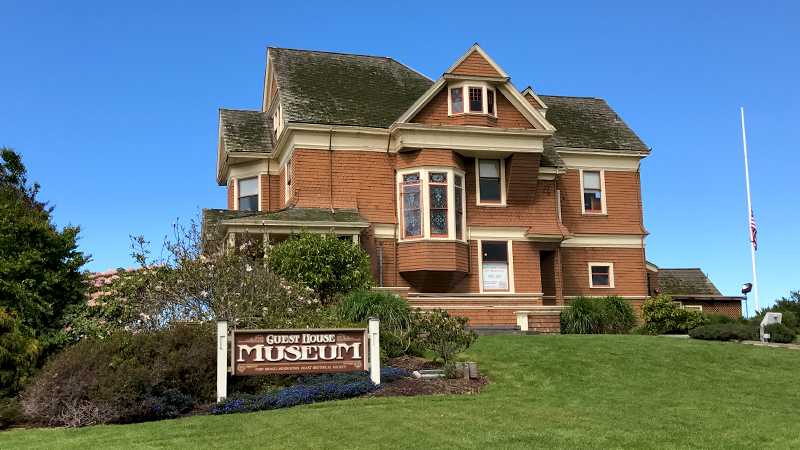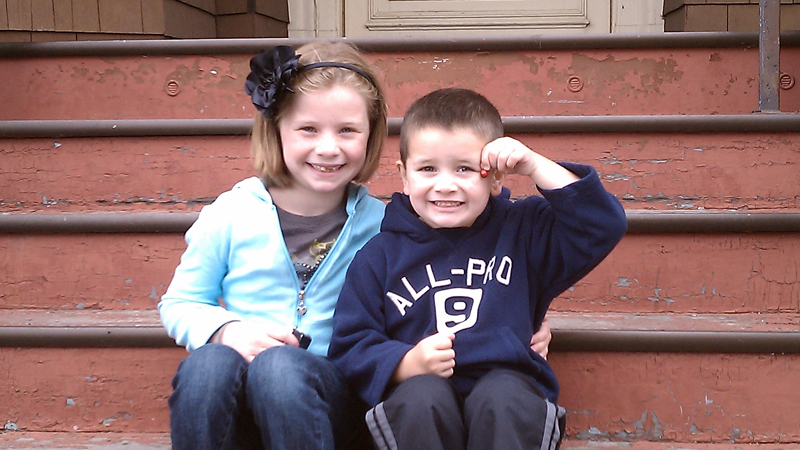
This year our spring break road trip destination was Fort Bragg and the Mendocino Coast. We hadn’t visited the area since 2010 and that was a spare change trip… After several years, when our spare change piggy bank was finally full, we broke it open and our savings added up to almost $600! We used the money for a long weekend in Fort Bragg and the entire trip, from the hotel and food to our activities, like riding the Skunk Train, were paid for in cash with that $600!
We had such fond memories of that trip, that we couldn’t wait to bring our much older kids back and explore the beaches, trails, small towns, and lighthouses.

Visiting Fort Bragg
Fort Bragg is the largest city between San Francisco and Eureka on the beautiful Mendocino Coast. Famous for its Glass Beach, family-friendly tidepooling at MacKerricher State Park, and the 100+ year old Skunk Train, the city has experienced a renaissance over the past few years, adding new shops and restaurants, miles of stunning coastal trails for walking, hiking, and biking, and a restoration of the Pudding Creek Trestle.
We spent our spring break exploring the town of Fort Bragg and the surrounding area from Ten Mile Dunes To Point Arena. We explored the city’s coastline at Pomo Bluffs Park, Noyo Headlands Park, and Pudding Creek Beach, shopped and snacked along Main Street, visited the city’s glass beaches and tidepools, and toured the Guest House Museum which is inside a huge Victorian home right on Main Street. We also found a Whole30 compliant restaurant, Cafe 1!
Guest House Museum
Fort Bragg’s Guest House Museum preserves and interprets the history of Fort Bragg and the Mendocino Coast and features exhibits on the logging, railroad, and fishing industries, the Pomo Indian Tribe, and the history of the town.
Sitting on a grassy knoll west of Main Street, the 1892 Victorian Mansion was originally the Fort Bragg Lumber Company’s guest house for executives, senior staff, and other guests visiting from San Francisco and was known as the Fort Bragg Redwood Company Cottage.
Built from 67,000 feet of local coastal redwood, the home had custom moldings milled in San Francisco, hot and cold running water, seven fireplaces, electricity, and a billiard room.
Just outside the entrance is a section of a 1,700 year old redwood tree. Cut down in 1943, it was the largest redwood tree grown in Mendocino County.
Later the Company Cottage became the Union Lumber Company Guest House and was used as a second home for the lumber company founder and the first Mayor of Fort Bragg, as well as guest accommodations for other visiting managers and businessmen. During this time, the home boasted a full staff, including a cook, housekeeper, and gardener.
When Boise Cascade Corporation bought Union Lumber Company in 1969, the guest house became a private residence for company officials. Then in 1973, when Georgia-Pacific Lumber Company purchased Boise-Cascade, it became a specialty boutique.
In 1985, Georgia-Pacific donated the magnificent Guest House to the City of Fort Bragg for use as a museum and the Guest House Museum was established. In 1999, the Fort Bragg-Mendocino Coast Historical Society was formed to help keep the museum open, when the City was facing budget cuts. They agreed to assume responsibility for running the Guest House Museum, helping the City fulfill its agreement with Georgia-Pacific.
The History Of Fort Bragg
The earliest inhabitants of the area were the Pomo Indians, hunter-gatherers who lived along the northern coast of California. In the mid-1850s, the 25,000 acre Mendocino Indian Reservation was established at Noyo Bay and Fort Bragg was established as a military garrison overseeing the reservation. In late 1864, the garrison was relocated and the military post was abandoned, and finally in 1868, the Mendocino Indian Reservation was discontinued and opened for settlement a few years later.
By 1869, ranches were established and lumber mills were being built at the mouth of creeks throughout the area, and by 1873, a lumber port was built at Noyo Harbor.
In 1885, the reservation land next to the port became the site of the Fort Bragg Redwood Company, which later acquired several smaller area lumber companies and was renamed the Union Lumber Company. Two years later the first rails were laid for the Fort Bragg Railroad were laid at Pudding Creek and a streetcar from San Francisco was purchased for tourism in the redwoods.
The 1906 San Francisco earthquake damaged or leveled most of the brick buildings in Fort Bragg, many wood-framed homes were shook off their piers, and fires ravaged blocks of the city.
While the earthquake first brought disaster, it then delivered prosperity. A year later, the entire city was rebuilt and the lumber mills were busier than ever, supplying the valuable redwood lumber needed to rebuild San Francisco.
Originally formed in 1905 to connect Fort Bragg and Willits, the California Western Railroad and Navigation Company completed the rail line and brought the first tourists to Fort Bragg from San Francisco in 1912. The train earned the name of Skunk Train from the smell of the burning fuel and while the smell is gone, the Skunk Train remains, still carrying passengers between Fort Bragg and Willits.
In 1969 the Union Lumber Company was purchased by Boise Cascade and in 1973 became Georgia Pacific Lumber Company. In 2002, the 425 acre mill that stretched across almost all of Fort Bragg’s coastline was closed town and the land was put for sale.
In 2003, the Coastal Conservancy awarded Fort Bragg an urban waterfront grant to plan for reuse of the Georgia-Pacific mill site and the city then spent several years negotiating for acquisition of approximately 100 acres stretching along the four-mile coastline on the former mill site. The State Coastal Conservancy awarded the city $4.2 million for purchase of 37 acres along the coast and Georgia-Pacific agreed to dedicate another 45 acres as part of the deal.
Construction of the Fort Bragg Coastal Trail, also called the Noyo Headlands Coastal Trail, was completed in 2015. The trail includes interpretive displays about the Pomo Indian Tribe, benches created by local artists, spectacular views, and a visitor center maintained by the Noyo Center for Marine Science.
Know Before You Go
- The Guest House Museum, run by the Fort Bragg-Mendocino Coast Historical Society, is located on CA HWY 1 at 343 N. Main Street, Fort Bragg, California 95437 in Mendocino County.
- Cafe 1 is located at 753 N Main Street, Fort Bragg, California 95437.
- Located inside a historic Victorian Mansion built in 1892 from local coastal redwood, the museum features artifacts, photographs, interpretive displays, and stories from the early days of Fort Bragg, the Mendocino coast, and the lumber and logging industries.
- Admission is free, but a small donation is requested.
- Open Thursday through Sunday 11:00 am to 2:00 pm from November through May. Open Monday 1:00 pm to 3:00 pm, Tuesday through Friday 11:00 am to 2:00 pm, and Saturday and Sunday 10:00 am to 4:00 pm from June through October.
- Located 11 miles north of Mendocino, Fort Bragg is the largest city on the Mendocino coast.














